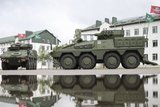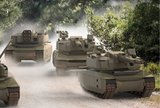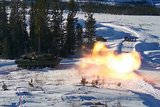Cambridge Pixel upgrades RTAF radar
The Royal Thai Air Force (RTAF) has selected Cambridge Pixel to upgrade its air defence capabilities at select strategic sites, including training facilities and air force bases, the company announced on 27 May.
The company was selected to upgrade the air force's legacy air defence display and processing hardware without replacing the radar sensors. Cambridge Pixel supplied its SPx suite of radar tracking and processing products that interface with existing primary and secondary IFF radars for upgraded target tracking from primary and IFF sensors.
The company's ASD-100 air situation display software provides an integrated display picture of primary and secondary video and tracks overlaid on maps. The software runs on standard PC hardware.
The new features will bring improved target tracking, track fusion, safety alerts and integrated data presentation on a large plan position indicator display.
David Johnson, CEO, Cambridge Pixel, said: 'This is another excellent export contract for Cambridge Pixel and it demonstrates, yet again, that the combination of our innovative software technology, radar engineering expertise and commitment to customer service is attractive to companies the world over.
'By combining our software modules for target tracking and fusion with our ASD-100 display application, we have offered a highly cost-effective upgrade to RTAF. For this project it was important that we could work with the existing radars, and our range of hardware interface cards and radar processing modules was a good match for the requirement.'
More from Land Warfare
-
Germany signs multi-billion-dollar deals for 6x6 CAVS and GDELS Eagle vehicles
The order is a further boost for the Common Armoured Vehicles System programme which has notched notable successes in the past 12 months. The first vehicle, made in Finland, will be delivered next year with local production expected to ramp up in 2027.
-
![Rheinmetall and KNDS tank tie-up narrows trans-European options]()
Rheinmetall and KNDS tank tie-up narrows trans-European options
The French and German governments signed an agreement in June 2018 to cooperate on the development of a new main battle tank under the Main Ground Combat System programme but the effort has struggled. This new agreement may damage it further.
-
![2025 land market review: British Army woes, European heavy armour and US MBT progress]()
2025 land market review: British Army woes, European heavy armour and US MBT progress
The last year has seen several major procurements in the land market. Shephard’s Dr Peter Magill reviews the main trends and themes in land procurement of 2025.
-
![Hungary set to begin using Hero 400 loitering munitions]()
Hungary set to begin using Hero 400 loitering munitions
Developed by Israel's Uvision and with systems being sold in the thousands to multiple European NATO countries and the US, the Hero family of loitering systems is also in production in the US and Italy, the latter through Rheinmetall.
-
![Croatia orders Leopards and CAESAR howitzers as Lithuania orders more CAESARs]()
Croatia orders Leopards and CAESAR howitzers as Lithuania orders more CAESARs
The Leopard is becoming the tank of choice in central and eastern Europe as Croatia joins Lithuania, the Czech Republic and Hungary in ordering the platform. Lithuania and Croatia have also signed for CAESAR howitzers.
























